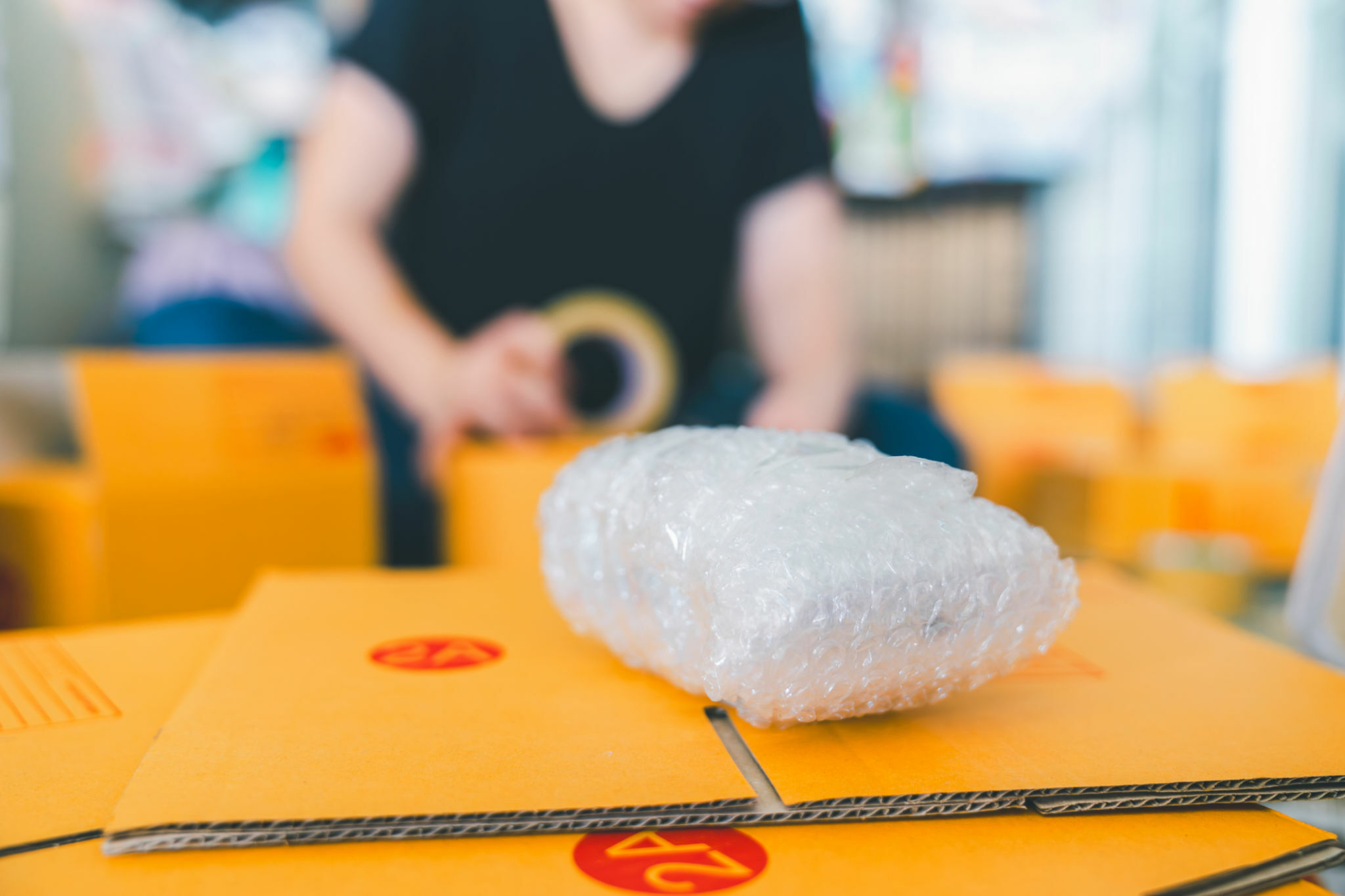Processing Company Prowess: Unlocking Effectiveness in Production
Wiki Article
Effective Industrial Recycling Solutions for Sustainable Packaging: A Comprehensive Overview
That's where this detailed guide on reliable industrial recycling solutions for sustainable product packaging comes in. By checking out essential areas such as product packaging material selection, making for recyclability, implementing reusing facilities, collaborating with reusing partners, and tracking and gauging reusing success, this guide will equip you with the understanding and tools necessary to make informed choices and drive positive modification within your organization. Whether you're a packaging professional, sustainability supervisor, or simply interested in the subject, this guide will certainly offer beneficial insights and approaches to assist you browse the globe of sustainable product packaging.Product Packaging Product Selection
The option of packaging products plays a vital duty in making certain the sustainability of commercial recycling solutions. The selection of products is vital in decreasing ecological influence and making best use of reusing efficiency when it comes to sustainable packaging. Picking the right products can aid minimize waste generation, save resources, and promote a round economic situation.One vital variable to think about in packaging material option is recyclability - industrial metal packaging. Products that can be quickly recycled and incorporated back into the manufacturing cycle are liked. Products like cardboard, paper, glass, and specific types of plastics can be reused several times without losing their top quality. On the other hand, materials that are tough to recycle, such as combined plastics or non-recyclable compounds, can create difficulties for the reusing procedure and may wind up in burners or landfills.
Another factor to consider is using eco-friendly and eco-friendly materials. Product packaging made from renewable energies, such as plant-based plastics or biopolymers, can help in reducing dependence on fossil fuels and alleviate environment modification. Additionally, naturally degradable materials break down naturally over time, lowering the accumulation of waste in land fills.
Moreover, the weight and volume of packaging materials need to be decreased to lower transportation expenses and energy usage. Lightweight materials not just require less sources during production but likewise add to reduce carbon discharges during transport.
Designing for Recyclability
Product packaging designers should prioritize the use of products that are commonly accepted for recycling and have actually established reusing infrastructures. Products such as glass, light weight aluminum, and particular kinds of plastic, like PET and HDPE, are commonly reused and should be liked over products that are pricey or difficult to reuse.Another critical consideration in designing for recyclability is the elimination of unneeded components or products. By minimizing the number of layers, coverings, and additional elements, product packaging can be made simpler and much easier to reuse. In addition, designers must intend to decrease the usage of combined materials, as they can complicate the reusing process.

Implementing Recycling Facilities
Reliable implementation of recycling infrastructure is critical for the success of commercial reusing services. Without correct framework in position, the reusing process becomes inefficient and ineffective, hindering the general objective of lasting packaging.To apply recycling framework successfully, a number of crucial aspects require to be taken into consideration. There should be an efficient collection system that assists in the separation and collection of recyclable materials. This can consist of assigned recycling containers in public areas, as well as collaborations with waste administration business for curbside pickup and sorting.
Once accumulated, the recyclable products need to be moved to reusing centers in a prompt way. This requires efficient read more logistics and transportation networks, ensuring that the materials reach the proper facilities right away.
At the recycling centers, advanced sorting and handling innovations should be in area to separate various sorts of products effectively. This consists of making use of automated arranging devices, optical scanners, and manual sorting strategies.
Moreover, there should be a robust market need for recycled materials. This can be accomplished via partnerships with manufacturers and markets that make use of recycled materials in their production procedures. Creating a steady market for recycled products incentivizes the reusing industry and advertises the circular economic situation.
Working Together With Recycling Allies

One key aspect of working together with recycling partners is the establishment of clear interaction networks. It is necessary to establish open lines of communication to facilitate the exchange of information, updates, and feedback. This allows both parties to stay informed about the progress of reusing initiatives and address any challenges or concerns that might emerge.
In addition, cooperation can entail collaborations in executing and developing recycling programs. Recycling companions can supply valuable insights and guidance in creating reliable collection systems and identifying one of the most appropriate recycling modern technologies. By collaborating, companies and recycling partners Read Full Report can enhance the recycling procedure and lessen waste.
Furthermore, collaboration can expand beyond the functional elements of recycling. It can likewise include campaigning for and education and learning campaigns. By signing up with forces, services and reusing partners can raise awareness concerning the significance of reusing and promote the fostering of sustainable packaging techniques among customers and other stakeholders.
Monitoring and Measuring Recycling Success
To ensure the performance of industrial recycling remedies and the achievement of sustainable product packaging goals, it is critical for companies and their reusing partners to establish a comprehensive system for tracking and gauging recycling success (processing company). Tracking and measuring reusing success allows services to analyze the effect of their reusing initiatives, recognize areas for enhancement, and established meaningful targets for future progressOne method to track reusing success is through the use of data collection and evaluation devices. By gathering information on the quantity of product packaging waste created, the percentage of waste that is recycled, and the sorts of materials being recycled, companies can acquire useful insights into their recycling efficiency. This information can after that be analyzed to recognize trends, patterns, and areas of inadequacy.
An additional important facet of monitoring and determining reusing success is establishing standardized and clear metrics. This enables organizations to compare their performance against market criteria and track their development gradually. Metrics such as recycling rates, waste diversion rates, and greenhouse gas exhausts can give a measurable procedure of a service's reusing success.

Conclusion
To conclude, applying efficient industrial recycling solutions for lasting packaging requires cautious consideration of product packaging product selection, making for recyclability, carrying out recycling framework, working together with reusing partners, and monitoring and determining reusing success. By integrating these practices, organizations can add to a more environmentally-friendly and lasting technique to packaging, lowering waste and advertising the circular economic situation.By discovering vital locations such as packaging material option, creating for recyclability, carrying out recycling facilities, teaming up with recycling partners, and monitoring and measuring recycling success, this overview will furnish you with the expertise and tools needed to make enlightened decisions and drive positive adjustment within your company. Packaging designers must focus on the use of materials that are commonly approved for recycling and have developed reusing infrastructures.Partnership with reusing partners is vital for the effective execution of commercial reusing solutions and the accomplishment of sustainable packaging goals. By joining pressures, organizations and reusing companions can elevate recognition about the value of reusing and advertise the adoption of sustainable product packaging methods among consumers and other stakeholders.
By collecting go to website data on the amount of packaging waste generated, the percentage of waste that is reused, and the types of products being reused, organizations can gain valuable insights right into their reusing efficiency.
Report this wiki page